Politics
Counting down Brexit by numbers

FROM March 30, Good Friday, the UK entered the final year of its membership of the European Union.
There have been recriminations on both sides of the EU debate since the UK voted by 52% to 48% to leave the European Union on June 23, 2016.
Leave side voters are divided by their victory over what type of Brexit they want, with a tiny rump of Conservative MPs apparently calling the Parliamentary tune, aided and abetted by a cavalier approach to the truth by government ministers and ever dissipating ‘red lines’. Never can so many on the victorious side have been so angry about winning or so unsure about what to do next.
On the Remain side, recriminations are even more intense. Some are sticking to the ‘it ain’t over ‘til it’s over’ line with increasing desperation, while there are claims of foul deeds committed by the Leave campaign. Some remainers have taken to striking the attitude of Violet Elizabeth Bott – who threatened to ‘thcweam and thcweam and thcweam’ until she was sick unless she got her way.
The refusal to acknowledge that crowding 17.5m voters were prepared to vote leave and meant it is, perhaps, the most revealing and troubling attitude of some dedicated remainers. The people were misled, lied to, duped; there were terrible lies told by the Leave campaign which swayed them; they did not know what they were voting for and had they known they would not have voted to Leave.; there is a need for a second referendum, the unspoken rationale for which is that Remain campaign won’t be as lazy and complacent next time around and voters will see sense.
On March 29, Jane Dodds, the Welsh Liberal Democrat leader said: “With the devastating consequences of Brexit now clearer than ever, it is right the public are asked whether they still want to continue down this path.”
The other side of the coin is the claim by Leave voters that those who voted to remain and are still fighting their corner are – in some way – unpatriotic and doing the UK down. That is an especially popular line from fringe Conservative MPs keen to wrap themselves in the Union Flag abandoned after UKIP’s implosion and plays well in newspapers whose owners reside overseas or in tax exile. Leavers say the argument is settled in a way that they would never have accepted had the vote gone the other way and by the same margin.
On March 29, Jacob Rees Mogg compared Remain campaigners to ‘the Japanese soldier [Hiroo Onada] who finally surrendered in 1974, having previously refused to believe that the Second World War had ended.”
With no end in sight to the sniping – and anyone who thinks that next March will be an end of it is sorely mistaken – it is perhaps worth looking at some numbers both relating to the Referendum result and which might have had an impact upon it.
THE VOTE AND THE POLLS
On June 23, 2016, 72.2% of just over 46.5m eligible voters cast their ballots in the Referendum. That means that almost 33.6m voters took part in the Referendum.
Of those 33.6m voters, 17.4m voted to leave the EU and 16.1m voted to remain.
27.8% voters – a fraction under 13m – did not vote one way or the other.
In percentage terms 52% voted to leave, 48% voted to remain.
In July 2017, ComRes reported:
- 63% of over-65s, but just 28% of 18-24s, voting Leave. Other age ranges were less divided; almost four in ten 25-44 year olds (37%) voted Leave.
- 78% of those with a degree voted Remain, while 69% of those whose highest educational attainment was a GSCE grade D-G voted Leave.
- Leave voters were least likely to trust either the Government or Parliament – almost two-thirds ‘distrust greatly’ both institutions.
- Leave voters are unconvinced of the merits of immigration. While 91% of Remain voters say it ‘enriches’ cultural life, only 9% of Leave voters think the same.
While the majority of the British public still think the government should press on with Brexit, they are far more finely balanced over what sort of Brexit it should be.
A further YouGov poll of just under 5,000 respondents carried out the same month as the ComRes poll showed that 61% of Leave voters think significant damage to the UK’s economy is a price worth paying for Brexit, while the remainder where divided almost equally between those who said it was not and those who ‘did not know’.
However, that poll revealed a significant shift when the same Leave voters were asked whether they thought either losing their own job or a family member losing theirs was a price worth paying. 39% of Leave voters were prepared to throw both themselves and family members under the bus, with 61% either saying no or don’t know to the same question.
That suggests that leave voters are prepared to react with equanimity to the thought of an abstract ‘someone else’ bearing any adverse consequences of Brexit, but less enthusiastic when it comes to bearing adverse consequences themselves.
WHAT BREXIT?
Those results underline the UK Government’s quandary over meeting voters’ expectations on Brexit and further highlight a significant factor that was, perhaps, lost in the Referendum campaign and upheaval afterwards; namely, voting leave did not decide the terms of the UK’s departure from the EU.
Voters were not electing Vote Leave – fronted by Boris Johnson and Michael Gove; instead, voters were presented with a binary choice without any gloss.
The question on the ballot paper was:
‘Should the UK remain a member of the European Union or leave the European Union?’
The question was solely about giving up (or not) membership of the European Union: there was no mention of free movement, the jurisdiction of the European Court of Justice, or an end to European-style regulation. There was no option to vote leave but remain a member of the European Economic Area. There was no option to vote remain but renegotiate the bits of EU membership you didn’t like. There was not even a requirement that Parliament to treat the result as final and binding.
The public advised Parliament that it wanted to leave the European Union and it is up to Parliament – having decided to follow the Referendum result with action to depart the EU – to determine the terms of departure.
Former industrial areas were much more likely to vote leave than to vote remain. And a clue to why that is the case can be found in the UK Government’s own statistics.
WINNERS AND LOSERS
We looked at a UK Government Briefing Paper on the employment of EU Nationals in the UK.
Across all regions, EU workers are more likely to be working in lower-skilled roles than the workforce as a whole. The proportion of EU nationals employed in elementary occupations was lowest for those living in London and highest in the East Midlands.
EU workers were also less likely to be working in high-skilled managerial and professional occupations than the workforce as a whole.
Although a higher share of EU nationals than UK nationals work in low-skilled occupations, EU nationals are more likely to be “over-educated” for the job they are doing, meaning they hold a higher qualification than was typical for people working in that occupation.
But the Briefing Paper’s findings were, perhaps, most illuminating when it came to employment levels within certain sectors in the decade leading up the Referendum.
Overall, the number of people in employment in the UK increased by around 2.5 million between 2006 and 2016, but while employment grew in some sectors it decreased in others. Even when there were periods of economic growth, more EU nationals found employment than their UK counterparts.
Well over 700,000 UK nationals stopped working in manufacturing industry between 2006 and 2016. But the number of EU nationals employed in manufacturing soared by just under 200,000. In construction, almost 400,000 UK nationals stopped working in that sector in the decade before the Referendum, but around 100,000 EU nationals found work in construction. Around 300,000 UK nationals ceased working in the automotive industry – wholesale, retail, repair of vehicles – while just over 200,000 EU nationals found work within it. And while 100,000 UK nationals ceased working in transport and storage, 100,000 EU nationals found work in that sector.
Those figures – combined with the polling evidence – suggest that voters in former industrial areas did not only perceive a threat to their economic security from membership of the EU and EU immigration to the UK, but ACTUALLY experienced adverse economic consequences as the result of inward migration of EU nationals into their regions and the subsequent displacement to EU immigrants of traditional sources of employment opportunities.
Tellingly, in the service sectors centred upon the major urban areas which voted remain there were greater employment opportunities and fewer EU migrants took up posts in those sectors.
In light of those figures, it can hardly be a surprise that areas which voted Leave by the greatest margin – notably the North West and North East of England – are precisely those areas in which the greatest number of manufacturing jobs were lost.
That economic data also suggests that the idea that re-running the Referendum to get ‘the right result’ would only serve to underline the stark economic and social divisions between two entrenched classes of voter.
A QUESTION OF CLASS
The British Election Study, which provides independent analysis of voting patterns and voters’ decision-making, found that one of the defining features of Leave voters outside of cosmopolitan areas was a nostalgic view of Britain’s past and a desire to turn back the clock.
A sense of national decline was a defining feature of the divide between Leave and Remain voters. The Study asked its respondents (who were screened to represent the proportions of the actual result) how much they agreed or disagreed with the statement ‘things in Britain were better in the past’. Fewer than 15% of those who strongly disagreed that things in Britain were better in the past voted to leave the EU while nearly 80% of those who strongly agreed did so.
The Study established that those who viewed themselves with less control over their lives and destinies were more overwhelmingly more likely to vote leave on the basis that leaving the EU would permit them to establish greater control over their individual destinies.
Combined with the economic data, the Survey’s results support the proposition that social class was the battleground of Brexit and that attempts to overturn the Referendum result will only increase the sense that ‘the classes’ live in an entirely different world – with different expectations, a different world view, and with greater social capital – than ‘the masses’ – who feel forgotten, diminished, and left behind by shining metropolitan visions of what it means to be a UK citizen in the 21st century.
Farming
‘Poor decision’ New Creamston housing condition overturned

A “POOR DECISION” agricultural worker-only imposed nearly 40 years ago has been removed from a Pembrokeshire property by county planners.
In an application recommended to be approved at the December meeting of Pembrokeshire County council’s planning committee, Tim and Cathy Arthur sought permission for the removal of an agricultural worker-only condition at New Creamson, Creamston Road, near Haverfordwest.
An officer report for members said the agricultural condition was imposed when the dwelling was built in 1988/89, with a later certificate of lawful development granted this year after it was proven the site had been occupied for more than 10 years on breach of that condition.
An application for a certificate of lawfulness allows an applicant to stay at a development if they can provide proof of occupancy over a prolonged period.
Speaking at the meeting, agent Andrew Vaughan-Harries of Hayston Developments & Planning Ltd told members the original agriculture-only condition was a poor decision by planners back nearly four decades ago.
“When this application was made in 1988-89 we go back to the Preseli District Council – I was still in school – it was only a 50-acre farm, it should never have been approved as it shouldn’t have been viable.
“The current applicants have owned it for the last 20 years; they’ve tried to grow apples but couldn’t make a go of it and then went in to holiday lets. We can’t enforce redundant conditions from bad decisions made years ago.”
Approval was moved by Cllr Brian Hall and unanimously supported by committee members.
Health
‘We are on our own’: Unpaid carers forced to ‘beg’ for support
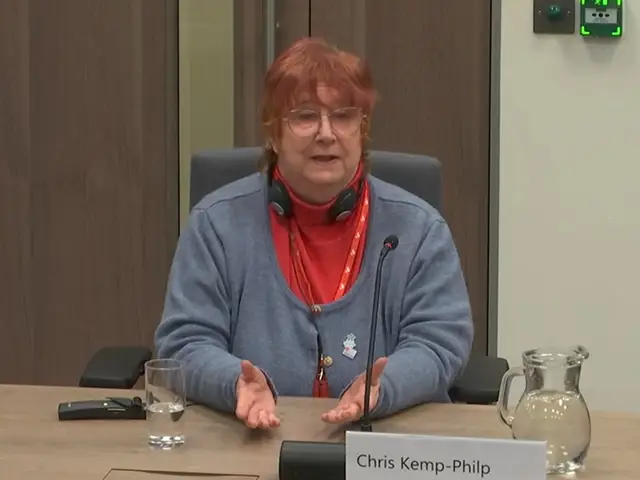
UNPAID carers are being left to “pick up the pieces” of a broken system due to a lack of respite, unsafe hospital discharges and carer’s assessments that result in “nothing at all”.
The warning came as the Senedd’s health scrutiny committee began taking evidence for an inquiry on access to support for more than 310,000 unpaid carers across Wales.
Chris Kemp-Philp, from Newport, who has been a carer for 33 years, gave up her career to become a full-time carer after her husband medically retired from the civil service in 1990.
Ms Kemp-Philp, whose husband died in April, told today’s (December 4) meeting: “I thought he’d been really badly treated… The last four months of his life were dreadful for both of us.”
She was only offered an updated carer’s needs assessment – a right under the 2014 Social Services and Wellbeing (Wales) Act – the day after her husband died.
Ms Kemp-Philp did not realise she had become a carer at first. “But, of course, having lost two incomes and to survive on a half civil service pension wasn’t great,” she said.
She told the committee how the couple “shielded” during the pandemic, saying: “For the past five years, basically, apart from going to a hospital or… a medical facility – I didn’t leave the house because if I’d have gone out, I could have brought something home.
“So, we spent five years literally avoiding people. The experience was unpleasant, I had two great-grandchildren born in that time and I only saw them on video.”
Ms Kemp-Philp said her husband was “pingponged” back and forth after unsafe discharges from hospitals in Gwent. He was put in a car by two nurses then she had to get him out on her own at the other end, with clinicians effectively telling her: it’s your problem now.
“Every time he was sent home, nobody came to help at all,” she said, explaining how she struggled to cope and her husband’s death brought a tragic sense of relief.
Judith Russell, who moved back to Wales to care for her mother 23 years ago, told Senedd Members the responsibility grew greater over the years.
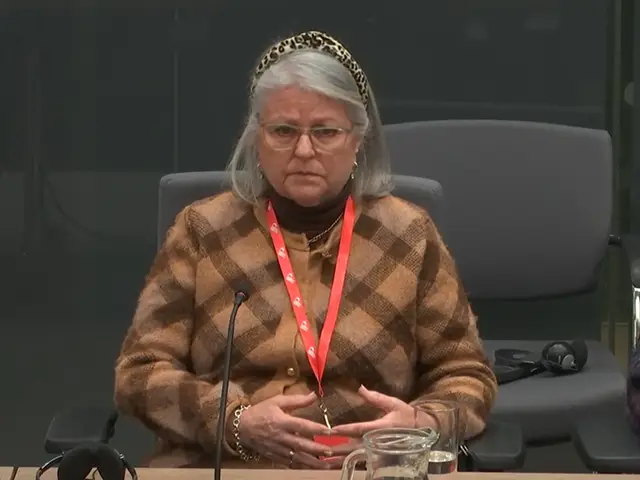
Ms Russell, whose mother died last Saturday on the eve of her 102nd birthday, told the committee: “It’s been my privilege to care for her but I wish other people—I wish there had been more actual care for her. That’s it.”
Ms Russell also cares for her husband who has Alzheimer’s disease, acts as guardian for her disabled sister and cooks every week for her sister-in-law.
“It’s quite a responsibility,” she said. “My life is taken up with caring. I didn’t actually know I was a carer, I cared for my mother because she was my mother – I looked after her, of course I did – and it wasn’t until about three years ago that I identified as a carer.”
Ms Russell warned: “All through this last 23 years, I’ve had to fight and struggle to find things out… there’s very, very little help out there.”
She said she was given a carer’s assessment earlier this year but “there was nothing they could offer me, quite frankly – nothing at all”.
Ms Russell told Senedd Members: “We had a diagnosis [but] there’s no offer of help, there are no directions to find help, somebody to point you – you should be doing this, this is available, that’s available – nothing, you’re on your own completely.”
She joined the Bridgend carers’ group which opened a door to other people grappling with the same weight of responsibility and helped navigate the system. Ms Kemp-Philp added that joining a similar peer support group saved her life.
Ann Soley, who is originally from France and has been living in Wales for eight years, described how life was turned upside down when her British husband had a stroke.
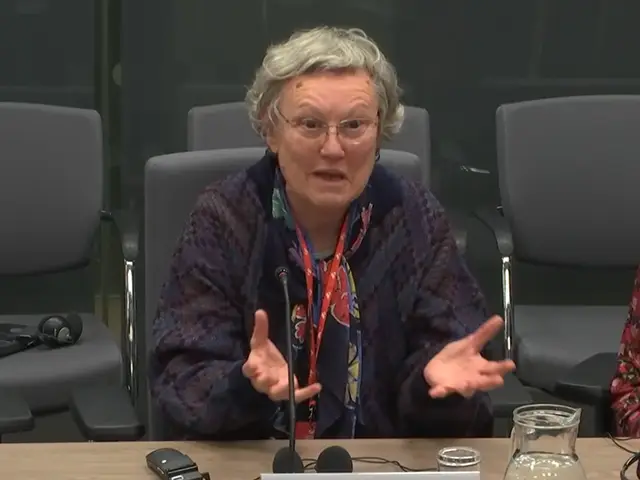
She said: “We are stressed, we are lost. A lot of carers have lost their friends, that is just unbelievable for me because I realised society is not there – there is no compassion.”
Kaye Williams, who works at Bridgend carers’ centre and is herself a carer, warned the witnesses’ experiences are commonplace across the country.
Sue Rendell, from Caernarfon, has cared for her husband who has vascular parkinsonism for nearly 14 years and was waiting for a doctor to call as she gave evidence remotely.
She told the committee: “You go in in the morning to see if he’s still breathing to be honest. We’re at the later stages of his disease and it’s physically demanding, it’s mentally demanding and it’s administratively difficult as well… it’s just very wearing.”
Ms Rendell, who was shattered after a late night caring, said she has tried to get respite but has been told there’s nothing available in Gwynedd nor Anglesey for her loved one’s needs.
She told the committee unpaid carers in Wales are “expected to pick up the pieces” but “nothing much happens” after an assessment. “Fine words butter no parsnips,” she said.
Ms Russell added: “As carers, we save the government millions… and I asked for some help this week actually. I’m 258th on the list for a hip replacement… and I asked the doctor: as a carer, couldn’t I possibly go up the list a little bit? ‘No, we’re not allowed to do that.’
“It’s the only thing I’ve ever asked for.”
Education
‘Sink or swim’: Young carer sat exam hours after 3am hospital ordeal

A TEENAGE carer sat a GCSE exam only hours after getting home from a hospital at 3am following a family emergency, a Senedd committee has heard.
The warning came as witnesses highlighted a “sink-or-swim” reality where children as young as three are taking on caring roles while feeling invisible to schools and social services.
Elektra Thomas, 15, who cares for her autistic, non-verbal brother and her epileptic sister, was part of a remarkable and articulate trio of teenagers who gave evidence to a new health committee inquiry on access to support for unpaid carers today (December 4).
The teenager helps her brother Blake get ready for school in the morning and helps him communicate by acting as his voice, which she has done since about three years old.
Ms Thomas told Senedd Members her sister has two children, “so I’m either handling her having a seizure, running around with her medication… or I’m looking after her kids”.
She said: “I’ve been having school assessments at the same time she’s had a seizure. I’ve been in ambulances waiting for her to get into a hospital while also studying.”
Ms Thomas explained how she is unable to focus on her schoolwork if her brother has had an overwhelming day. “I can’t focus on myself and I don’t have time for myself,” she said.
The teenager, who is from Carmarthenshire, described how she was once in hospital until 3am then sat a test – which went towards her GCSE grades – that same day.
Ms Thomas warned young carers do not have time to manage their own mental health, saying: “I didn’t have time for myself, I had time for my brother and sister and that was it.”
She said: “As a young carer who wasn’t noticed for a decade, it was pure manic: I had no coping skills, I had no support – and this has been going on since I was about three or four.”
Ffiôn-Hâf Scott, 18, from Wrexham, who is working while studying in sixth form, has similarly been a carer since she was four years old.
“I used to care for my mum and my sister,” she told the committee. “My sister used to be in a psychiatric ward, she was there for seven years.
“And I care for my mum because she’s diabetic, classed as disabled, has a long list of mental health issues, she has in the past suffered a stroke and had cancer.
“I don’t know how she’s still standing.”
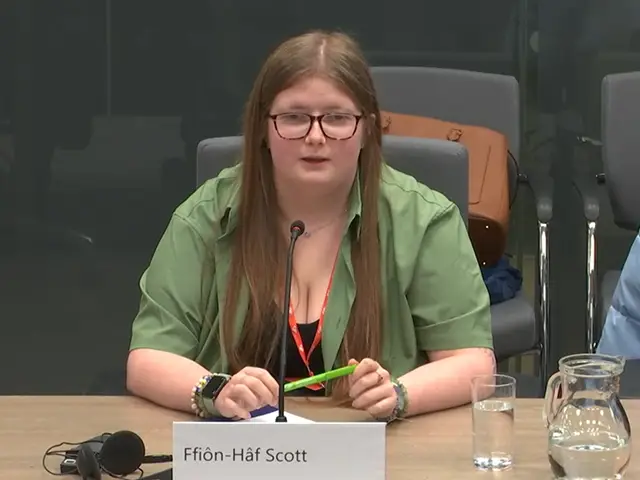
Ms Scott said: “The main challenge right now is looking after myself and learning that you actually have to keep yourself afloat… to keep looking after someone else.
“I think for a very long time I ran on nothing because of my caring role or I didn’t think about the things I needed to do for me, so respite and things like that.”
The Welsh Youth Parliament member warned a lack of support for young carers has been normalised, saying she has had to explain herself 70 different times while aged 12.
Ms Scott said: “I remember going to my teacher and saying – we had a piece of coursework – look I can’t do this right now… you’re going to have to fail me…
“Their response was just ‘well, you have too much on your plate and you need to take things off your plate’ and I was like: it’s very bold of you to stand where you’re stood and say that to me because it’s not a choice to take on the things that we do take on.”
She recalled receiving a phone call about her mum collapsing moments before a maths test and expressed concerns about the prospect of mobiles being banned in schools.
Albie Sutton, 16, a young carer from north Wales, looks after his disabled mother by doing things such as cleaning the house, budgeting and cooking for the family every day.
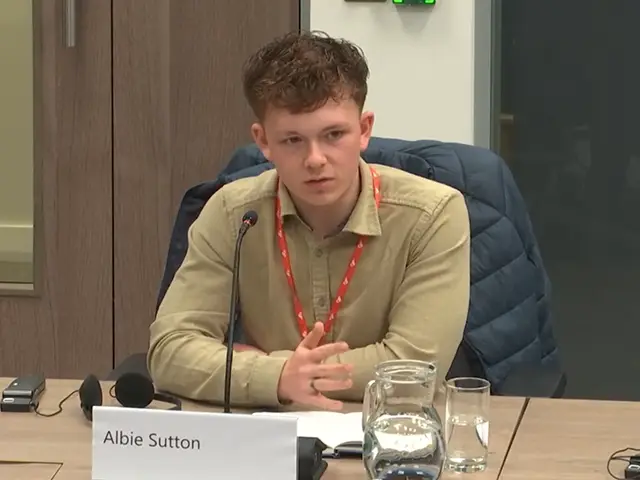
Mr Sutton said: “It’s a real struggle for her to move around the house, to even do stuff like getting dressed or moving to the toilet by herself… so I’ve got to help her.”
The teenager estimated his caring role takes up about 25 hours a week and makes it difficult for him to pursue some of his hobbies such as competing in powerlifting.
“My mind feels like a hive of bees,” he said. “There’s so many things going in and out… I get home at the end of the day and I’m like ‘oh my God, I’ve got to do this, I’ve got to do that’.”
Warning of the mental stress, he added: “It’s also really difficult for me to socialise… I feel very isolated in my caring role, especially at home. I’m always housebound, I never get the opportunity even just to go out in my local town.”
Mr Sutton told Senedd Members it plays on his mind that his younger brother may have to take on responsibility. “It’s got me debating whether I can go to university,” he said.
He called for a Wales-wide campaign to raise awareness among educators and employers of the issues young carers face and how to recognise the signs.
Ms Thomas agreed: “I’ve had multiple teachers look at me and go ‘what’s a young carer, sorry?’. I’ve had pharmacists go ‘are you sure you’re a young carer?’ and it baffles me.”
-

 Crime2 days ago
Crime2 days agoDefendant denies using Sudocrem-covered finger to assault two-month-old baby
-

 Crime1 day ago
Crime1 day agoPembroke rape investigation dropped – one suspect now facing deportation
-

 Crime6 days ago
Crime6 days agoMan denies causing baby’s injuries as police interviews read to jury
-

 News1 day ago
News1 day agoBaby C trial: Mother breaks down in tears in the witness box
-

 Crime2 days ago
Crime2 days agoLifeboat crew member forced to stand down after being assaulted at Milford pub
-

 Crime3 days ago
Crime3 days agoDefendant denies causing injuries to two-month-old baby
-

 Crime3 days ago
Crime3 days agoPembrokeshire haven master admits endangering life after speedboat collision
-

 Crime15 hours ago
Crime15 hours agoMother admits “terrible idea” to let new partner change her baby’s nappies alone






























